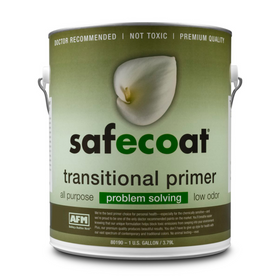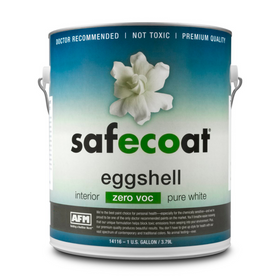
OEKO TEX Certification: Choosing Healthy Furnishings For Your House
Last Updated: Feb 26, 2025The smell of a freshly painted kitchen or the recent hardwood flooring installation in your living room might make your home feel new and innovative. However, homeowners are starting to realize that "new" smells associated with home improvement projects are volatile organic compounds (VOCs). VOCs are harmful to your family's health. International Association for Research and Testing in the Field of Textile and Leather Ecology (Oeko-Tex, for short) issues product-related labels on an industry-wide level. These labels confirm the human and ecological safety and sustainability of both textile products and leather articles. They cover all production stages, including raw materials, fibers, yarns, fabrics, and ready-to-use products.
Studies have shown that dozens of dangerous VOCs are in everyday household items. VOCs link to numerous serious health issues, from the formaldehyde in your manufactured wood projects to benzenes in your carpeting, including respiratory disease and cancer.
Incorporating air purification technology into your home is one way to improve your interior air quality. Opting for home products that are either low or zero VOC, on the other hand, is just as important. While there are several options for low-VOC or VOC-free paints and formaldehyde-free wood products, textiles in the home often include several harmful chemical components. These components don't only affect your home's interior air quality but also link to environmental degradation.
We've written guides about choosing healthy, chemical-free mattresses and some of the certifications associated with safe bedding products. Below, we offer a breakdown of the textile industry's effects on the environment and human health. We'll focus specifically on textiles destined for household use. We'll explain how Oeko-Tex certification works and give examples of popular products that are certified. We'll end by offering suggestions on how homeowners can choose healthy and more sustainable textile products for their homes.
Table of Contents
- Does The Textile Industry Impact The Environment?
- What is Oeko Tex Certification?
- What Products are Covered by Oeko-Tex?
- Suggestions for Finding Healthy and Sustainable Textile Products for Your Home
Does The Textile Industry Impact The Environment?
According to one analysis, the textile industry has become the second most polluting industry globally (after the oil industry). There are several reasons why. Some of the fibers used are harmful when produced. The chemicals used to bleach, color, and finish some textile products are dangerous. Landfills are filling up with unfashionable clothing items, old bed comforters, and carpets. The textile industry is responsible for a wide array of environmental damage.
While cotton is a natural material, it's often produced through a chemically-intensive process. This process requires large amounts of pesticides, which often contain heavy metals such as aluminum, nickel, and lead. The residues from these pesticides filter into local watersheds, affecting both wildlife and human communities. The bleaching and dyeing process for cotton and other textiles requires many toxins that end up in the environment and the fibers of the textiles that we use to adorn our homes.
Nylon and polyester fabrics are synthetics made from the petrochemical industry. These textiles are non-biodegradable and are dependent on the oil industry. Not only that, but nylon production creates and releases large amounts of nitrous oxide. This is a greenhouse gas that is over 300 times more potent than carbon dioxide. The bleaching and dyeing process for synthetic fabrics produces salts, surfactants, and detergents that don't decompose and tend to accumulate in natural environments.
Rayon, or viscose, is another standard fiber utilized in a wide range of household textile products. While rayon is made mainly from wood pulp, it is, unfortunately, standard for an old-growth forest to be cut down so that fast-growing trees can be planted. Eucalyptus trees are one common species that are also responsible for draining local aquifers.
Almost all-natural and synthetic fibers used to create textile products could be saturated with enormous chemicals and toxic substances. These chemicals and materials are slowly released into our homes.

What is Oeko Tex Certification?
The OEKO Tex Standard is an international lab testing and textile certification system. It's based out of Switzerland and is used to research and certify fabrics, finished clothing, and household textile products. They offer several different certifications, but the Standard 100 by Oeko-Tex is the most widely utilized and recognized of the certifications they offer. The organization based the standard off of other regulatory frameworks for the textile industry, including REACH from the European Union and the Consumer Product Safety Improvement Act (CPSIA) from the United States.
The Standard 100 Oeko-Tex Certification, however, sets the bar notably higher than other regulatory frameworks. They test to ensure that products adhere to necessary international legal regulations. They must avoid using banned substances. Some examples are Azo colorants, formaldehyde, pentachlorophenol, cadmium, and nickel. The Standard 100 also bans several other known harmful chemicals, even if they aren't regulated in the EU or the United States.
The Oeko-Tex certification is an objective and reliable product label. It's meant to inform consumers and provide a uniform safety standard to assess harmful substances in textiles and fabrics. It bans or severely limits several different types of chemicals, including:
- Brominated flame retardants (Penta, octa, deca, others)
- Chloro-organic toluenes and benzenes
- Formaldehyde
- Pesticides
- Extractable heavy metals
- Phthalates in baby articles
- Emissions of VOCs including toluene, styrene, butadiene, and others
- AZO dyes and other known carcinogenic and allergy-inducing dyes
- Chlorinated phenols
- Organotin compounds (TBT and DBT)
Paint & Finishes
Score the ultimate combo of powerhouse paints and finishes, delivering performance with a side of family-friendly healthiness!

Vermont Natural Coatings PolyWhey Exterior Penetrating Wood Stain
Vermont Natural Coatings
In Stock
14 Colors

Vermont Natural Coatings Penetrating Water Proofer Infused With Juniper
Vermont Natural Coatings
In Stock

Vermont Natural Coatings PolyWhey Floor Finish
Vermont Natural Coatings
In Stock

Vermont Natural Coatings All-in-One Stain & Finish
Vermont Natural Coatings
In Stock
16 Colors

AFM Safecoat Transitional Primer
AFM Safecoat
In Stock

AFM Safecoat Dynoseal Roof and Foundation Sealer
AFM Safecoat
In Stock

Vermont Natural Coatings PolyWhey Furniture Finish
Vermont Natural Coatings
In Stock
3 Colors

AFM Safecoat Zero VOC Interior Paint - White
AFM Safecoat
In Stock

Vermont Natural Coatings Wood Cleaner
Vermont Natural Coatings
In Stock

Vermont Natural Coatings PolyWhey 3500 Wood Floor Finish
Vermont Natural Coatings
In Stock
What Products are Covered by Oeko-Tex?
While most of the products that receive Oeko-Tex certification are clothing items, their "Class 4" products are related to furniture items and home textiles, including:
- mattresses
- curtains
- sofa covers
- cloths
- etc.
OEKO Tex Standard 100 does not certify companies but instead focuses on strict laboratory testing of specific product samples. That said, companies that market many products that have received the Oeko-Tex Standard 100 will most likely be committed to sustainable and healthy textile production in their factories.
Suggestions for Finding Healthy and Sustainable Textile Products for Your Home
Because the Oeko-Tex certification is an intensive and expensive testing system, companies are not generally expected to certify all the products they manufacture and market. However, it would be best to look for companies that boast of having received Oeko-Tex certification for some of their products, which will indicate sustainable production and management. You can search for products, brands, and trademarks that have received the Oeko-Tex certification here.
Natural fabrics such as cotton and wool are almost always a better option than their synthetic counterparts. Synthetic textiles are often made from petrochemicals and require higher amounts of chemical inputs in the finishing process. While natural fabrics come from renewable resources, cotton is often reliant on many chemical additives. Make sure to prioritize products labeled organic cotton to avoid bringing harmful pesticides and other chemical agents into your home. The GOTS (Global Organic Textile Standard) is another crucial certification for textiles that contain at least 70% organic fibers.
The market for locally produced textiles is limited, so don't be afraid to use technology to better understand the origins of textile products. Try using The Good on You app when shopping online for bed sheets or curtains. It helps you research the environmental impact of brands and gives brand recommendations.
Part of being an ethical consumer is educating ourselves about the actual effects of our home products on our health. Opt for household textiles that achieve Oeko-Tex certification. It's a simple way to protect the environment while also keeping dangerous chemicals and VOCs out of our homes.
Tobias Roberts
Tobias runs an agroecology farm and a natural building collective in the mountains of El Salvador. He specializes in earthen construction methods and uses permaculture design methods to integrate structures into the sustainability of the landscape.
